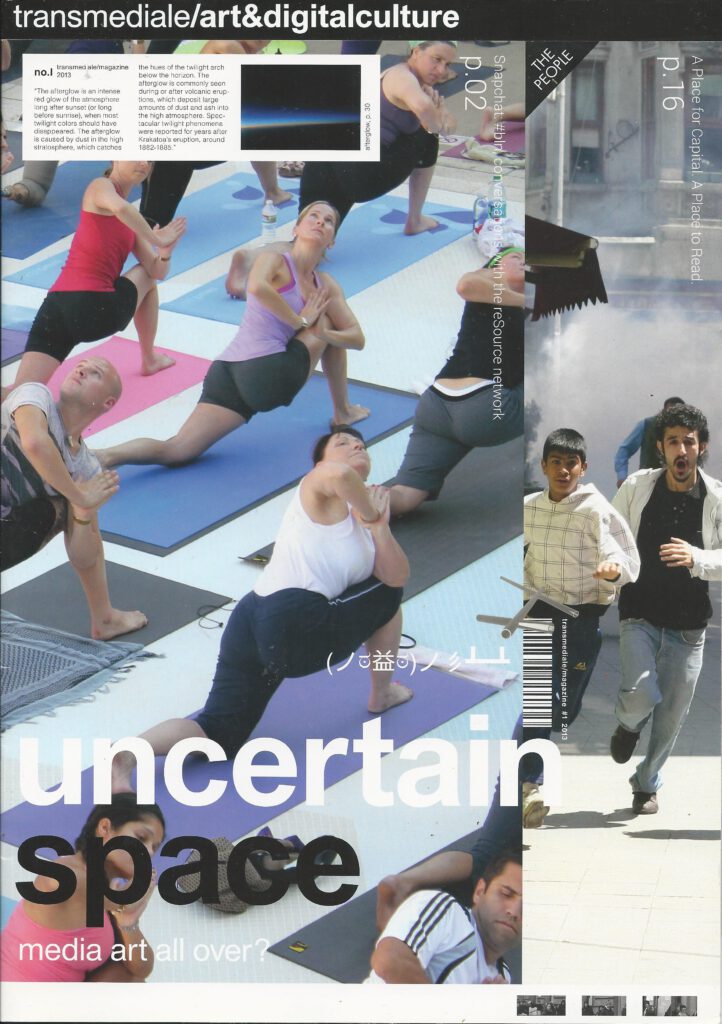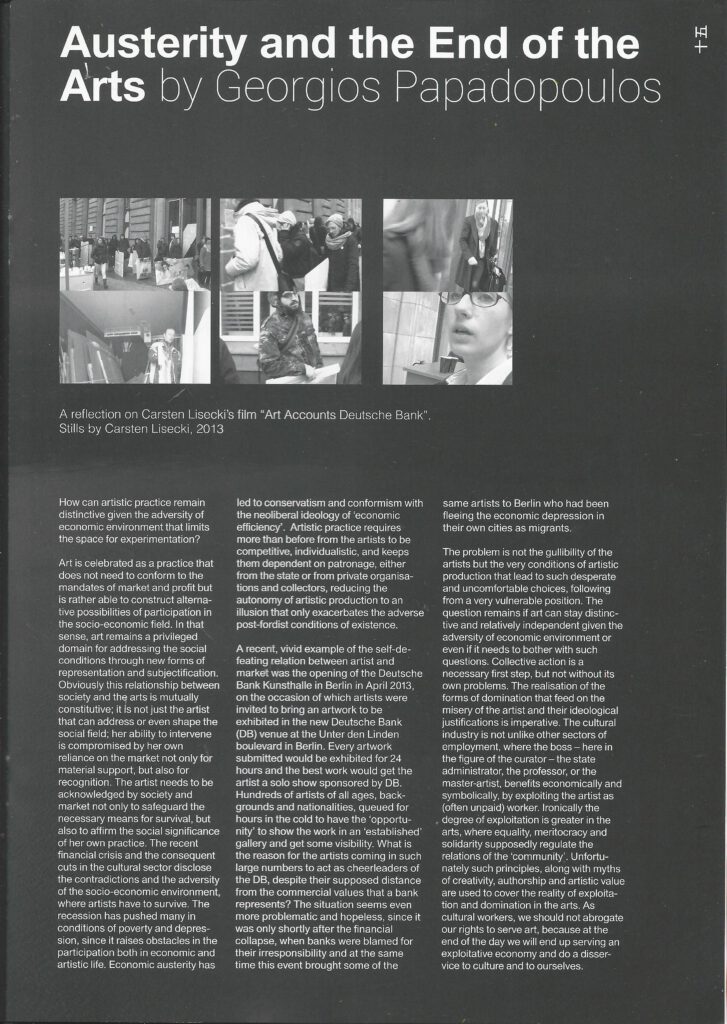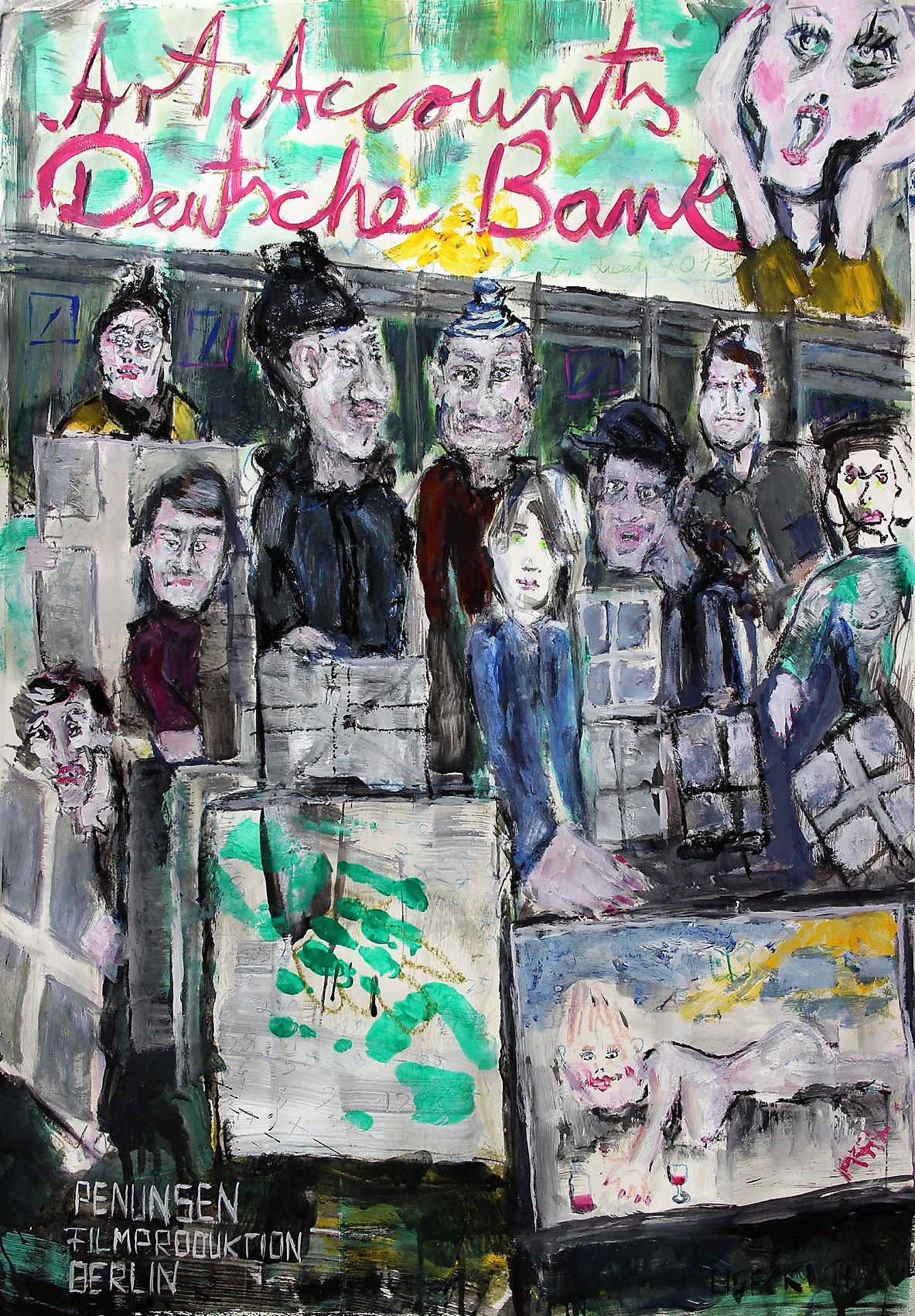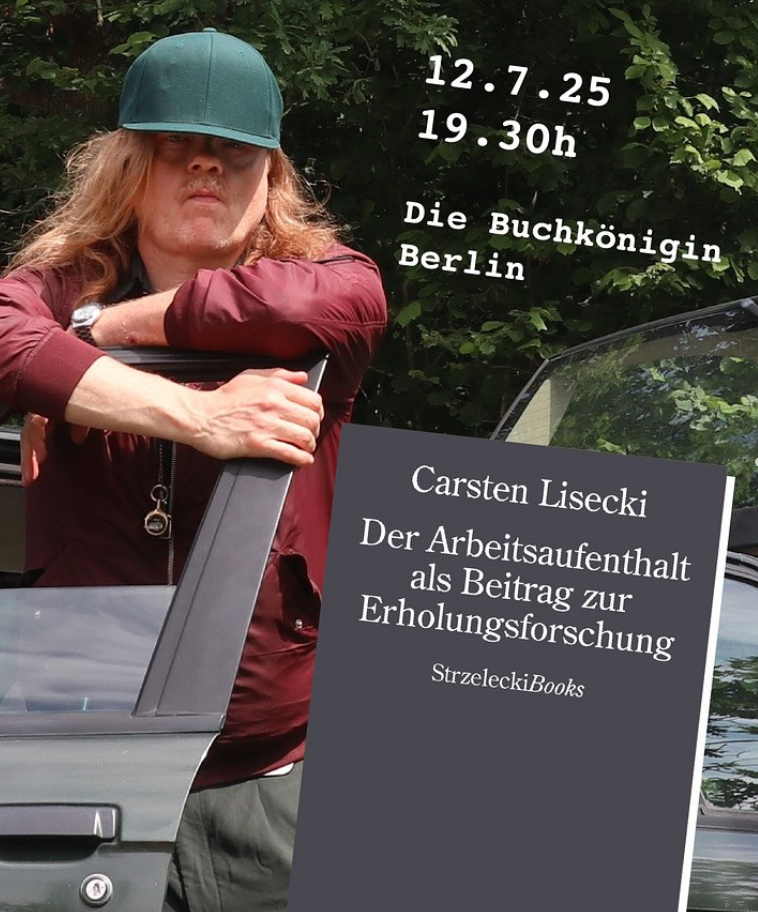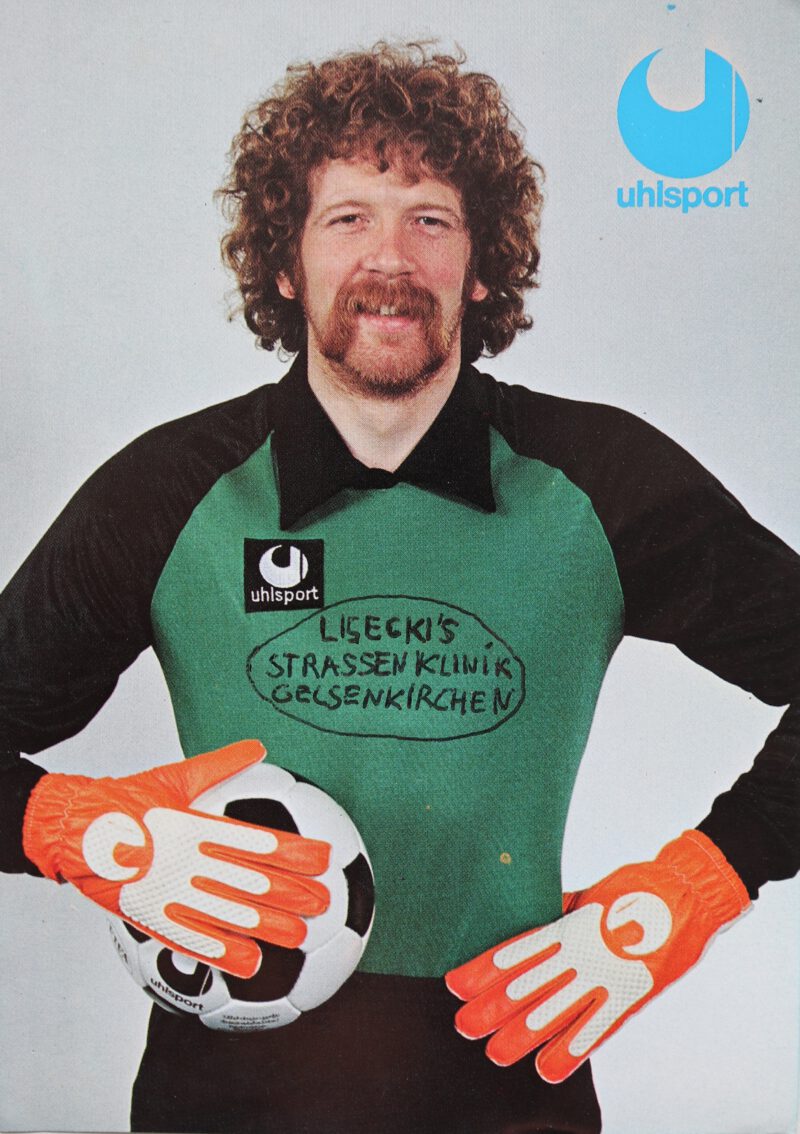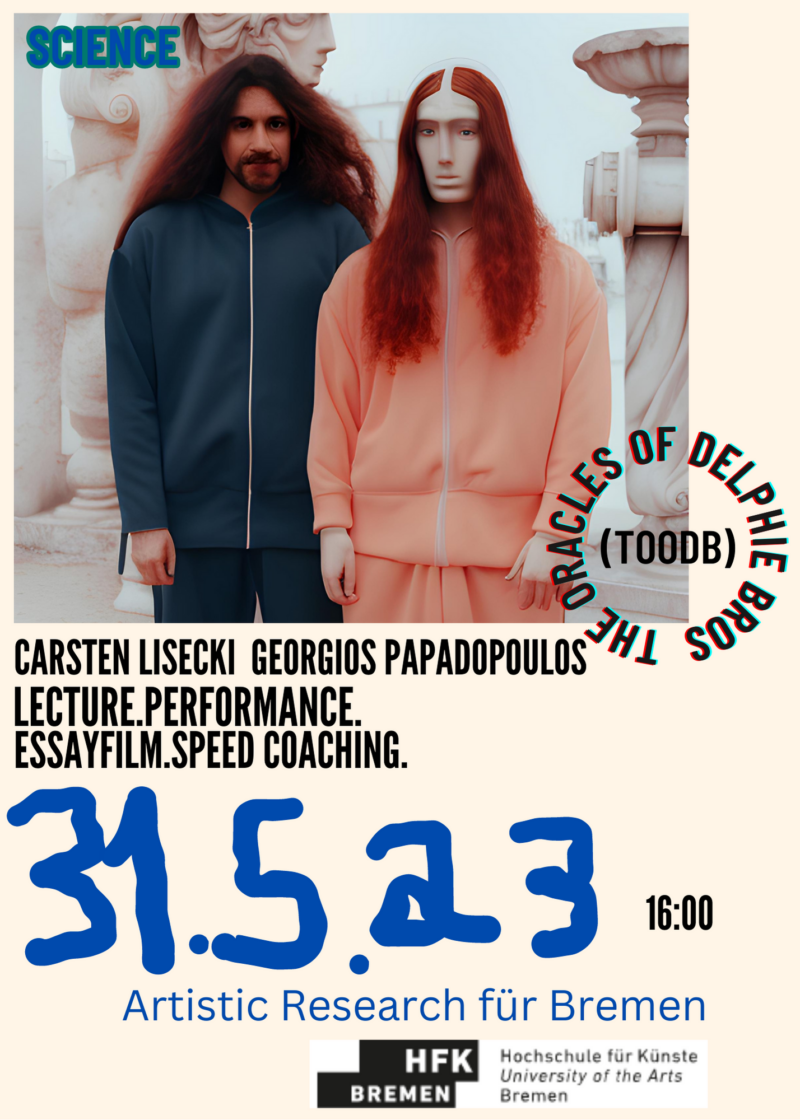Deutsche Bank Kunsthalle 2013
Im April 2013 wurde die Deutsche Bank Kunsthalle eröffnet. Das Problem: Kein Berliner kannte den neuen Namen. Wie also in einer Stadt voller Galerien auf eine Galerie aufmerksam machen? Die Deutsche Bank beauftragte die Werbeagentur Scholz&Friends mit der Kampagne. Diese hatte die Idee einer “Jeder kann mitmachen”-Ausstellung. Künstler konnten ihre Werke für 24 Stunden in der neuen Kunsthalle ausstellen. Die Aktion war ein voller Erfolg für Bank und Scholz & Friends. Tagelang bildeten sich telegene Schlangen vor der Kunsthalle. (Mehr als 1800 unkritische TV- und Presseberichte generierten laut Scholz & Friends 150 Millionen Kontakte).
Niemand kam auf die Idee, Statist in einer Werbekampagne der Deutschen Bank zu sein. Verkauft wurde es als großzügige Chance für Berliner Künstler. Die Installation der Wartenden war mit einer Gulaschkanone dekoriert, die Assoziationen von Armenspeisung weckte. Ich interviewte wartende Künstler, Mitarbeiter und Angestellte.
Deutsche Bank Art Gallery 2013
The Deutsche Bank Kunsthalle opened in April 2013. The problem: nobody in Berlin knew the new name. So how to draw attention to a gallery in a city full of galleries? Deutsche Bank commissioned the advertising agency Scholz&Friends with the campaign. They came up with the idea of an ‘anyone can take part’ exhibition. Artists could exhibit their works for 24 hours in the new art gallery. The campaign was a complete success for the bank and Scholz & Friends. For days, telegenic queues formed in front of the Kunsthalle. (According to Scholz & Friends, more than 1800 uncritical TV and press reports generated 150 million contacts).
Nobody had the idea of being an extra in a Deutsche Bank advertising campaign. It was sold as a generous opportunity for Berlin artists. The waiting installation was decorated with a goulash cannon that evoked associations with feeding the poor.
–
Artistic practice is celebrated as autonomous, innovative and often anti-conformist, but what are really the conditions of artistic production? Art Accounts Deutsche Bank gives a glimpse on the adverse economic environment where the artists have to survive. Competitive, individualistic, and always dependent on patronage, either from the state or from private organizations and collectors, the autonomy artistic production is illusory. On the 5th of April 2013, on the occasion of the opening of the Deutsche Bank Kunsthalle, artists were invite to bring an artwork to be exhibited in the new Gallery in Unter den Linden. Everything would be exhibited for 48 hours and the best artist would get a solo show sponsored by DB. Houndreds of artists of all ages, backgrounds and nationalities, queed for hours in the cold to have the “opportunity” to show the work in an “established” gallery and get some visibility. Problematic maybe, hopeless for sure, but what is the reason that the artists came in such large numbers to act as cheerleders of the DB only a few years after the financial meltdown blamed in the irresponsibility of banks like the DB, a financial collapse that brought some of the same artists in Berlin as migrants fleeing the economic depression in their own cities. Art seems not so critical when is participating for free to the campaign of the DB. The problem is that the very conditions of artistic production in Berlin lead to such desperate and political uncomfortable choices. The film points to the problem of the isolation of the artist, its precarious position and the difficulty of acting collectively. The answer to that question can only be given by the viewer. 2013
Text: Georgios Papadopoulos
Art Accounts Deutsche Bank, Carsten Lisecki (2013)
Text: Georgios Papadopoulos
Künstlerische Praxis wird als autonom, innovativ und non konformistisch wahrgenommen, aber was sind die realen Bedingungen der Kunstproduktion?Art Accounts Deutsche Bank gibt einen Einblickin die wirtschaftlichen Gegebenheiten der Künstler, ihre Abhängigkeit vom Mäzenatentum in Gestalt von staatlichen Institutionen, privaten Organisationen und potenten Sammlern. Der Film zerstört die Illusion vom Freigeistigen Künstler und veranschaulicht die problematische Beziehung von Künstlerischer Praxis und der Nähe zum Markt.
Die Deutsche Bank Kunsthalle hatte anläßlich ihrer Eröffnung am 5. April 2013 alle Kunstschaffenden dazu eingeladen, ein Kunstwerk ihrer Wahl in den neuen, repräsentativen Räumlichkeiten in Berlin, Unter den Linden, auszustellen. Juryfrei sollte alles gehängt werden und unter den Ausstellern sollte per Abstimmungsverfahren eine Einzelausstellungen in einem Nebenraum der Kunsthalle ausgelobt werden.
Der Aufruf fand ein großes Echo in der Berliner Kunstszene und es bildete sich mehrere Tage eine mehrere hundert Meter lange Schlange anstehender Künstler aller Altersgruppen, Nationalitäten und Positionen. Trotz der Kälte harrten die Menschen mit der Aussicht einer wagen Chance aus, um ihre Arbeit in einer etablierten Galerie zu zeigen und dadurch Sichtbarkeit auf dem Kunstmarkt zu erlangen.
Warum begeben sich Künstler in diese problematische und hoffnungslose Situation und lassen sich als Cheerleader der Deutschen Bank missbrauchen, obwohl gerade diese Institution auf verantwortungslose Weise den Finanzkollaps entfacht hat? Viele Künstler in der Warteschlange flüchteten vor der Wirtschaftskrise in ihren Ländern nach Berlin und empfanden sich erstaunlicherweise nicht als kostenloser Statist der Werbekampagne der Deutschen Bank. Die Schwierigkeit Beachtung zu finden, das eigene Werk präsentieren zu können und die Isolation als prekärer Künstler führen zur verzweifelten, politisch bedenklichen Mitarbeit an einer Werbeaktion der Deutschen Bank. Art Accounts Deutsche Bank, von Carsten Lisecki wird am Donnerstag, den 27. Februar um 19:00 (MQ Raum D) zu sehen sein, im Rahmen der Eröffnung der Installation: Zu viel Geld
